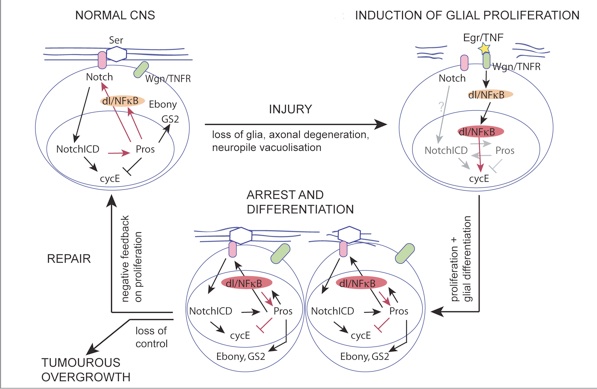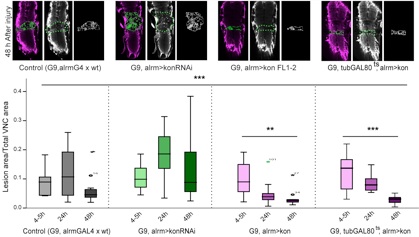Control of glial proliferation is linked to neuronal circuit formation
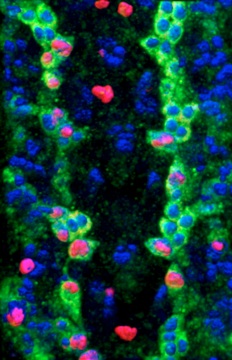
We have shown that the control of glial cell proliferation is coordinated with neural circuit formation. Glial cells are delivered sequentially, during circuit formation. At these time points, glial cells function as guidepost cells, orienting growth cone guidance and axon fasciculation. The controlled delivery of glial cells sorts axonal patterns through time. Ablation of neurons causes a drop in glial division first, and an excess in glial proliferation later on, at times when glia do not normally divide. This latter over-proliferation mimics the repair response of vertebrate glia upon neuronal injury.
The Prospero-Notch gene network enables the glial regenerative response to CNS injury
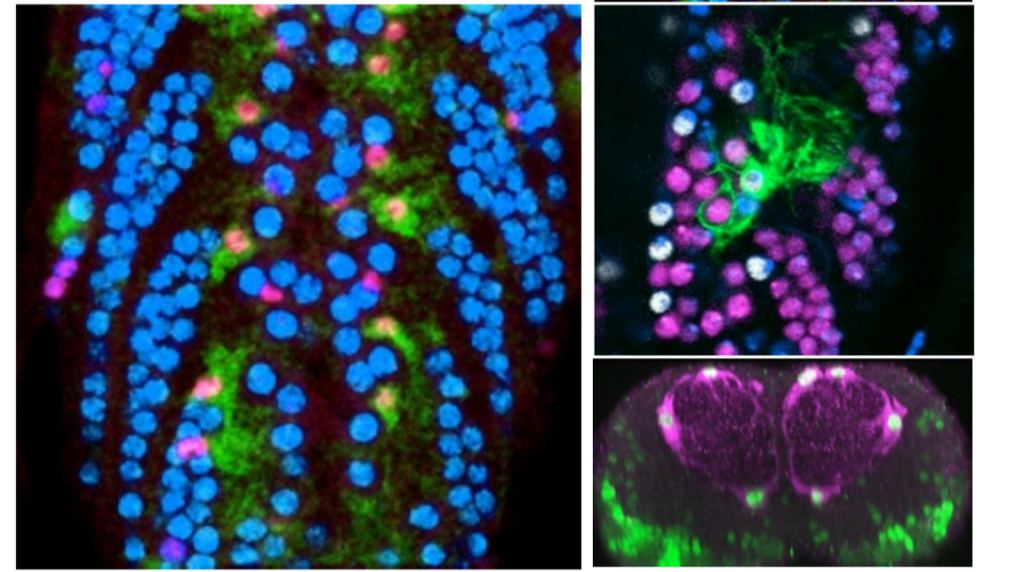
Damage to the CNS (e.g. brain and spinal cord) induces the proliferation of glial cells and spontaneously re-enwrapment of axons, revealing a natural tendency of the CNS to repair itself. This is known as the ‘glial regenerative response’ and it is present from cockroaches and flies, to fish and humans. We recently discovered a gene network in Drosophila that regulates the regenerative ability of glial cells in response to injury.
Evolutionarily conserved function of Prox1 inhibits oligodendrocyte progenitor proliferation and promotes oligodendrocyte differentiation in the mouse

In collaboration with mammalian experts Prof. Ann Logan (IBR, Medical School, University of Birmingham) and Dr Fumio Matsuzaki (Center for Developmental Biology, RIKEN, Japan), we asked whether this network might be evolutionarily conserved in the mouse.
Molecular mechanism of central nervous system repair by the Drosophila NG2 homologue kon-tiki
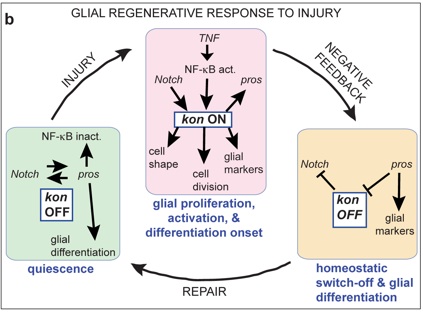
Back in the fly, we showed that the Drosophila NG2 homologue kon-tiki (kon) is functionally linked to the Pros-Notch gene network.
